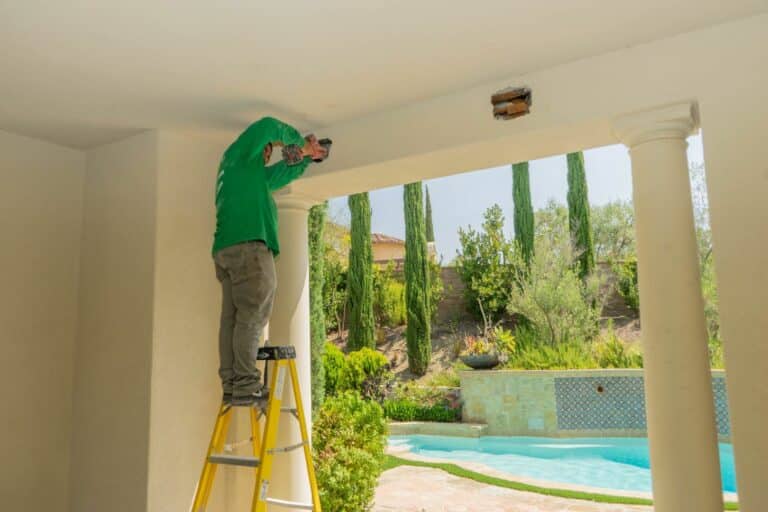PEX piping in plumbing have taken over the plumbing industry due to their flexibility, durability, and cost-effectiveness.
Growing Popularity in Residential and Commercial Settings
PEX piping is now the most-installed plumbing product for residential new construction and is increasingly being used in commercial applications.
- Easier installation: PEX pipes can be installed quickly with fewer fittings needed.
- Better performance: PEX pipes are resistant to freezing temperatures and can expand without cracking under pressure changes.
- Affordability: PEX pipes are a cost-effective alternative to copper or CPVC pipes.
According to the Plastics Pipe Institute, more than 60% of all new homes built today use PEX tubing for their water supply lines.
PEX pipes are also ideal for various projects such as potable water systems, hydronic heating systems, or even radiant floor heating installations.
Unlike rigid metal pipes that require soldering or welding joints together during installation, PEX pipes can be installed quickly with fewer fittings needed.
The unique properties of cross-linked polyethylene allow PEX pipes to expand without cracking under pressure changes, making them resistant against freezing temperatures unlike copper pipes that may burst when exposed to extreme cold conditions.
Using a cost-effective alternative like PEX helps save on overall project expenses while still providing high-quality results at competitive prices per linear foot installed by your local plumber from Repipe1 services provider.
Benefits of Using PEX Piping in Plumbing
PEX piping offers long-term durability and higher heat-resistance compared to traditional metal pipes like copper or galvanized steel.
Long-term Durability
Cross-linked polyethylene (PEX) is a structurally modified plastic material that provides resistance against creep deformation, chemicals, and cracks – making it a reliable and long-lasting solution for residential plumbing.
Higher Heat-Resistance
PEX tubing expands when exposed to heat, preventing leaks caused by thermal expansion and allowing it to withstand extreme temperatures without compromising its structural integrity – perfect for hot water heater applications and hydronic heating systems.
Increased Impact/Tensile Strength
- Tensile strength: PEX pipes have a higher tensile strength compared to other piping materials, such as copper or CPVC, making them more resistant to stretching under pressure without breaking.
- Fewer fittings: Flexible PEX tubing requires fewer fittings for potable water applications, resulting in fewer potential leak points and a more efficient plumbing system.
Overall, PEX piping systems offer a reliable and efficient alternative to traditional metal piping systems, with special fittings available for commercial applications and potable water systems.
Improved Water Flow Efficiency with PEX Plumbing Systems
Compared to rigid plumbing alternatives, PEX systems offer better water flow efficiency as they require fewer fittings and allow water to flow silently through them.
PEX pipes bend around corners with ease, reducing pressure loss for improved system efficiencies and overall performance.
Fewer Fittings Required
The flexible nature of PEX pipes means that there are fewer joints needed compared to traditional metal piping materials like copper or galvanized steel, simplifying installation and minimizing potential leak points.
Silent Water Flow
PEX tubing absorbs vibrations from running water, resulting in a silent water flow that is especially beneficial in residential settings where peace and quiet are highly valued.
Reduced Pressure Loss
- Potable water applications: The smooth interior surface of PEX tubing allows for minimal resistance against flowing liquids, resulting in less pressure loss throughout your potable water supply lines. (source)
- Radiant heating & hydronic heating systems: The reduced pressure drop across PEX piping helps maintain consistent temperatures across all zones without sacrificing energy efficiency. (source)
- Fewer elbows & special fittings: The flexibility of PEX pipe allows it to easily navigate around obstacles without needing additional elbow connections or other special fittings that could contribute to pressure loss. (source)
Advantages of PEX Piping in Plumbing Installation
PEX pipes are the perfect choice for residential and commercial applications due to their flexibility and versatility.
No Soldering or Glue Needed
PEX plumbing systems use special fittings, eliminating the need for hazardous chemicals and reducing installation time.
Push-Fit Systems Resist Scale Formation and Pitting Corrosion
PEX tubing with push-fit systems is more resistant to common issues found in metal pipes, such as scale formation and pitting corrosion.
- Easier Installation: PEX’s flexibility reduces the number of fittings needed, simplifying the installation process.
- Fewer Connections: With fewer connections, there’s less chance for leaks or failures down the line.
- Better Performance: PEX systems provide improved efficiency and overall performance due to water flowing silently without pressure loss at each change in direction.
With these advantages, it’s no wonder that more homeowners and contractors are choosing PEX piping over other piping materials like copper pipes.
Different Methods for PEX Piping & Plumbing Connections
Installing connections on a flexible pipe network can be a breeze with these five methods: crimp clamp, push-to-connect, expansion fitting, compression fitting, and special fittings designed for PEX piping systems.
Crimp Clamp Method
The crimp clamp method uses a stainless steel ring and specialized tool to create a secure connection without soldering or gluing.
Push-to-Connect Method
Simply push the PEX tubing into compatible push-to-connect fittings for an easy and watertight seal.
Expansion Fitting Method
- Use an expansion tool to enlarge the end of your PEX tubing before inserting it into specially designed fittings for a tight bond.
- PEX pipes are popular for their durability and heat-resistance properties in both residential and commercial applications.
Maintenance Tips for PEX Piping Systems
Proper maintenance is crucial for the longevity of your PEX piping system – store them away from dirt and debris, use a cutter for accurate cuts, and check the required insertion depth for specific connection types.
Storing Pipes Correctly
Keep your pex pipes in a clean environment to prevent contaminants from entering the plumbing system during installation or repairs.
Accurate Cutting Techniques
- Cutter: Use a specialized cutter designed for cutting plastic pipe like PEX tubing.
- Straight Cuts: Make sure each cut is straight across with no jagged edges that could cause leaks.
- No Over-Cutting: Avoid over-cutting by marking the desired length on the pipe before making any cuts.
Avoiding Common Mistakes
Maximize performance capabilities of pex piping systems by using correct fitting sizes and avoiding excessive force when connecting sections to prevent leaks and reduced efficiency in commercial and residential settings.
Sustainability Benefits of Using PEX Pipes
PEX piping is the future of plumbing, thanks to its eco-friendly nature and lower environmental impact during manufacturing compared to traditional materials like copper.
According to the Plastics Pipe Institute, PEX requires less energy and produces fewer greenhouse gas emissions during production compared to metal pipes, making it a more sustainable choice for both residential and commercial applications.
- Radiant heating and cooling systems: PEX tubing can be easily integrated with radiant heating and cooling systems, which are known for reducing overall building energy usage.
- Potable water applications: PEX pipes maintain better water quality in potable water applications than traditional metal piping materials such as copper or galvanized steel.
- Durability: The long-lasting nature of PEX plumbing means that it will need replacing less frequently than other types of pipe material, further reducing waste generation over time.
Using PEX piping also eliminates the need for disposable filters or belts in certain hydronic heating systems, making it an environmentally conscious approach to modern-day plumbing solutions.
FAQs
Why Pex Piping is the Future of Plumbing
PEX plumbing is superior to traditional copper piping systems due to its long-term durability, higher heat-resistance, and increased impact/tensile strength, making it the perfect choice for residential plumbing.
- PEX pipes require fewer fittings, providing silent water flow and reduced pressure loss.
- PEX tubing expands up to three times less than copper pipes, reducing the risk of leaks.
- PEX plumbing is easier to install and maintain, saving time and labor expenses.
- PEX pipes are ideal for both commercial and residential applications, including potable water and hydronic heating systems.
How Long Does PEX Piping Last?
PEX piping can last up to 50 years or more when properly installed and maintained, thanks to its resistance against corrosion, scaling formation, freezing temperatures, and high-pressure conditions.
- Factors such as water quality and installation practices may affect its lifespan.
Why You Should Consider Replacing Old Plumbing with PEX
If your existing plumbing system shows signs of wear or damage such as leaks or corrosion, replacing it with a PEX repipe could provide numerous benefits like improved efficiency in water flow rate reduction maintenance costs while increasing overall reliability performance.
- PEX plumbing is a cost-effective solution that can save you money in the long run.
- PEX pipes are flexible and can bend around corners, reducing the need for special fittings.
- PEX plumbing is approved by the Plastics Pipe Institute and manufactured by reputable companies.
Why Plumbers Prefer PEX Piping
Plumbers prefer using PEX piping due to its ease of installation compared to other materials like copper metal pipes requiring soldering gluing applications which can save time labor expenses increase project efficiency without compromising on quality safety standards.
- PEX plumbing is a reliable and safe option for potable water applications.
- PEX pipes are available in a variety of pipe sizes and can be used in both residential and commercial applications.
- PEX plumbing is compatible with compression fittings and special fittings, making it a versatile choice for any plumbing system.
Enquire With Repipe1 Today
Why PEX Piping is the Future of Plumbing: PEX piping is the new kid on the block, and it’s here to stay thanks to its durability, heat and chemical resistance, improved water flow efficiency, easy installation process, sustainability advantages, and versatility of applications.
With fewer fittings required and silent water flow reducing pressure loss, PEX systems offer an excellent alternative to traditional materials, and while the initial material costs may be higher, the long-term benefits make it a worthwhile investment for anyone looking to repipe their home or business.
By following proper storage techniques and cutting methods while avoiding common mistakes during installation, you can ensure proper functioning and longevity, and integrating radiant heating/cooling with lower environmental impact in manufacturing provides eco-friendly solutions that align with modern-day sustainable practices.
Overall, choosing PEX piping over traditional materials offers numerous benefits both financially and functionally, making it the future of plumbing.


